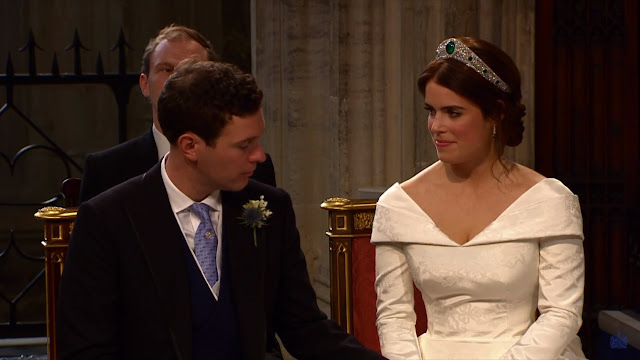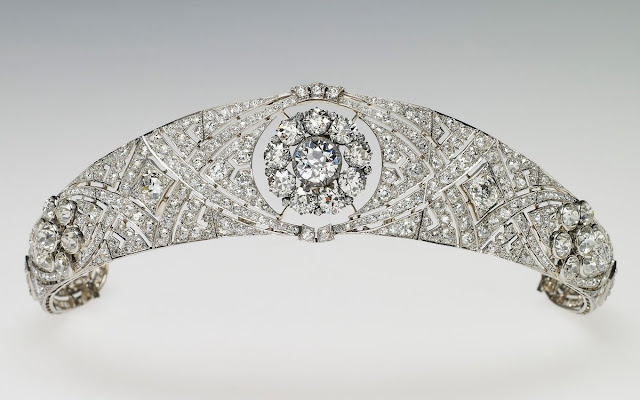Click here for all posts on this wedding!
I assumed that Princess Eugenie would wear her mother’s tiara, the York Diamond Tiara, when she married Jack Brooksbank; I’m happy to say I was completely wrong. The tiara that we got instead is sort of a deep cut from the royal vaults – one probably only known to those who dig deep into the unworn pieces of the Queen’s jewel collection. This tiara was suspected to be in the royal vaults, but since it hasn't been worn since it came into royal hands (just, oh, 76 years ago or so), you really couldn't be sure.
 |
| Royal Family screencap |
She was also a tremendous collector of jewelry and a frequent patron of Boucheron and Cartier. The extraordinary collection inherited by Queen Elizabeth is reported to have included over 60 pieces, many of which we still can’t identify today. The Greville bequest is such an important part of the jewelry collection of the Queen Mother (and now of the Queen's collection, since she inherited all her mother’s jewelry), I wrote a two-part series on it at the Jewel Vault: check out Part 1 here and Part 2 here.
 |
| The Greville Emerald Kokoshnik Tiara Boucheron |
It’s a striking piece, isn’t it? Designed in the kokoshnik style popularized at the Russian imperial court, the tiara includes brilliant and rose cut diamonds pavé-set in platinum with a central emerald and emeralds on either side (the official press release lists six emeralds on either side; only four or five to a side are visible). According to Boucheron: The Secret Archives, the oval central emerald is a whopping 93.70 carats. (Worth noting: the same book, drawing from Boucheron’s own archives, states the piece was bought by Mrs. Greville in 1921.)
It’s hard to imagine how such a piece could go unworn for more than 75 years. Things did tend to remain tucked away in the Queen Mother’s collection, though; she had her favorite pieces and rarely strayed from those. (She did wear other emerald pieces that were reportedly part of the bequest, such as the magnificent Greville Emerald Necklace.)
 |
| Royal Family screencap |
























































